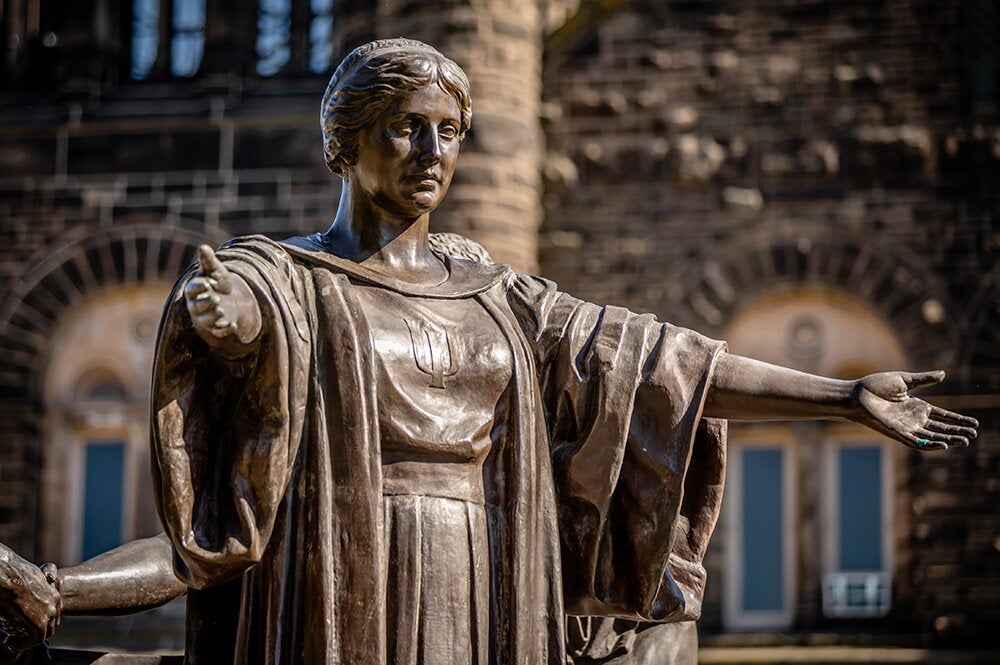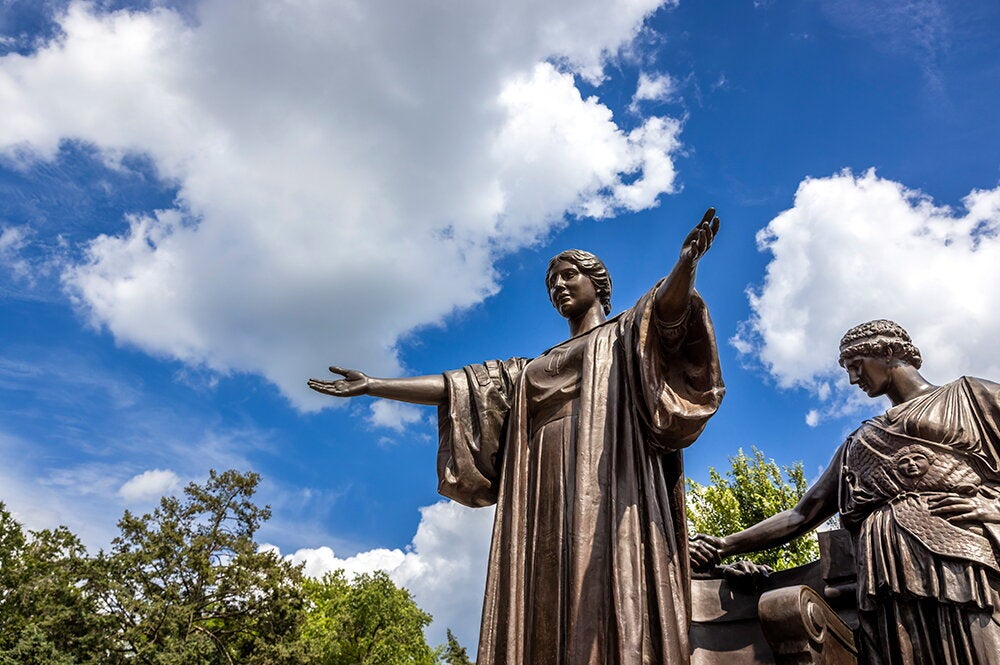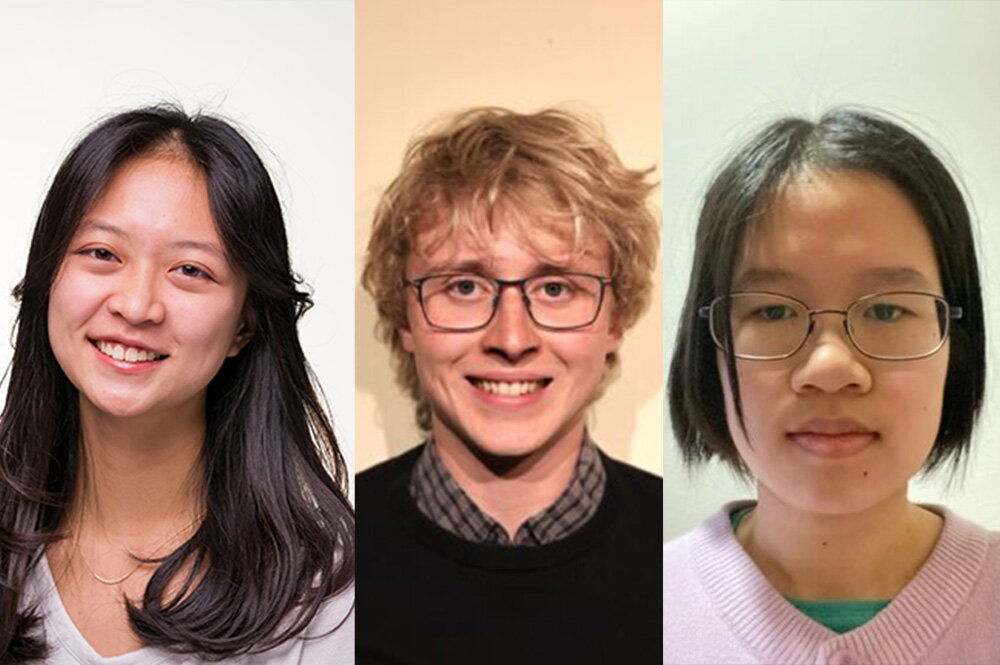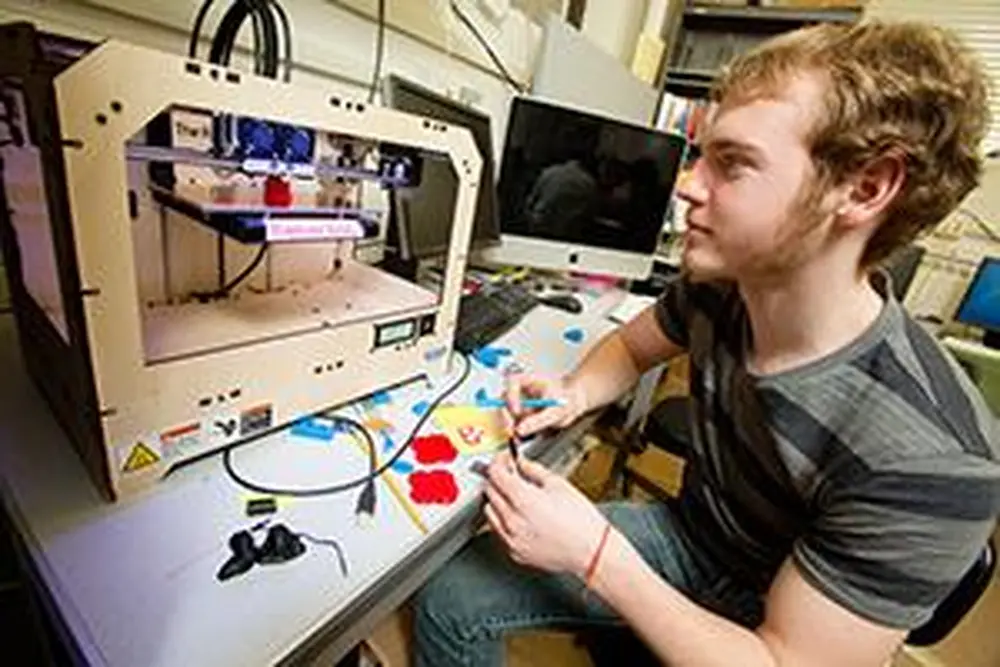
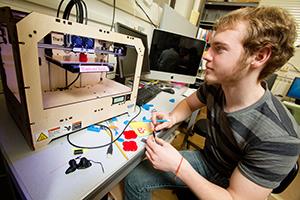
When you enter the Illinois Geometry Lab, situated in the lower level of Altgeld Hall, take any assumptions you have about mathematics and leave them at the door.
This is where research teams of undergraduates, graduate students, and faculty members meet to discuss the latest in mathematics. Just as there are breakthroughs in science and engineering, our understanding of math as a fundamental tool is evolving, too.
That’s a guiding principle behind the lab, now in its fourth semester. Situated in a conference-sized room with a 3-D printer and computers lining the walls, the lab is intended to drive home the point that mathematics is “alive” and constantly changing, says Jayadev Athreya, director and co-founder of the lab.
“The purpose of the lab is to really get them into this idea that they’re going to be exploring and figuring out genuine new things, and that that’s just going to be absolutely an enormous amount of fun,” he says.
“We help translate problems even in many areas of mathematics where you wouldn’t expect visuals, or geometry, to play a role,” Athreya, assistant professor of mathematics, adds.
The lab is centered on a community of faculty members and students working together on research, taking seminars on tools and software such as Mathematica, and doing outreach with K-12 students.
Research teams, most of them advised by a faculty mentor, are led by one or more graduate students, and composed of a small group of undergraduates. The spring semester had 12 teams with a total of 37 participating undergraduates, each expected to devote about 10 hours a week to the project.
Brian Freidin, a senior in math from Northbrook, Ill., says he joined the lab in the spring semester of last year, after taking a course with Athreya.
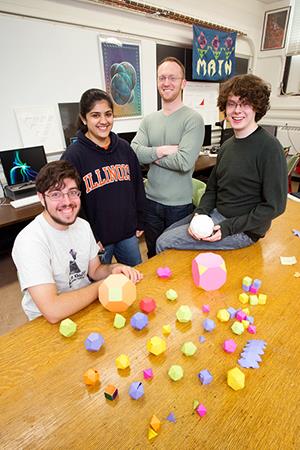
Freidin already was interested in the geometric side of things, so that was motivation to get involved. He joined a team mentored by Professor Stephanie Alexander, studying Minkowski space, the geometric setting for Einstein’s theory of special relativity. That project is now in its third semester.
They’ve progressed through several phases of research, he says, and they’re working on a paper.
“It’s different seeing a professor teaching versus seeing a professor doing research math,” Freidin says. “It’s just a whole new side that’s opened up.”
Ananya Uppal, a sophomore from New Delhi, started college with plans to study engineering but now majors in math.
“I never actually thought of it (math) as a major,” she says, but a couple of classes convinced her to change her course of study. Her involvement in the lab appears to have reinforced that decision.
Uppal’s project with Professor A.J. Hildebrand, on n-dimensional integrals, started with one question, but has evolved, she says, and it’s very dynamic and keeps changing. And that’s the point Athreya is trying to make through the lab—that there’s plenty left to discover.
“Saying that what students learned previously in school is math is like saying that learning grammar is learning literature,” Athreya says.
Number theory, for instance, was an area of math developed decades ago with no practical application, but is now used extensively in computers and cybersecurity, Uppal says.
“It’s something that you would think that, oh yeah, we’re just playing with numbers, but now it’s an integral part of our life,” she says.
Although the research teams are a central focus of the lab, there are other ways for undergraduates to be involved, including outreach with K-12 schools and the community. One outing involved setting up a demonstration at the local farmers’ market.
In one program, K-12 students come to the lab for an interactive activity, where they’re split up into research groups. Facilitators present the younger students with leading questions designed to get them understanding a big idea.
It’s designed to be exploratory and hands-on, and they might use the 3-D printer to produce shapes, or use interactive demonstrations on the computers. Part of the thinking is “if we can get people to have a physical connection with math, then they’re much more likely to have a mental connection with math,” says graduate student Noel DeJarnette, the lab’s outreach manager.
In other programs, lab members visit area classrooms and after-school programs, DeJarnette says, to offer hands-on, thought-provoking ways to bring new levels of understanding.
Those new levels of understanding include revising ideas of how math is done. Without the lab, Uppal says, she likely would have stuck to studying and working on her own, since that’s the way she’d always done it. But the lab got her to work with others on these problems.
And that’s a concept that gets to the root of advancing modern science and technology, say participants in the lab. At its best, math is a team activity.
